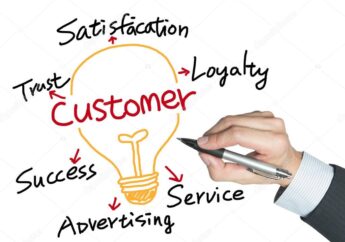What Are The Steps In The Purchase Order Process?
by Soumava Goswami Customer Service Published on: 06 April 2024 Last Updated on: 19 October 2024

Striking a balance between maintaining the operation and mitigating the demands of the consumers is an ultimate goal. It is the biggest stimulus for a business to persistently grow from the soil of a competitive market.
Each and every business relies on a steady flow of goods and services to maintain its operations and meet customer demands. The purchase order process is a necessary first step that sets an entire cycle of procurement in motion.
This multi-stage process has certain steps, such as carefully identifying an organization’s requirements and vetting, as well as selecting appropriate suppliers. Ultimately, it helps negotiate terms, issue formal purchase orders, oversee order fulfillment, and receive and inspect the goods ordered.
The seemingly straightforward purchase order process is a meticulously orchestrated sequence of events. It ensures companies can acquire the resources they need to function effectively and efficiently.
What are the steps Included in the purchase order process?
The purchase order process follows its own structure and progression. Let us understand them in general terms.
The first process includes considering the optimization of the entire process. The organization needs to automate the process of purchase and, after that, reap the benefits from the e-procurement or procurement software.
Secondly, the organization needs to make an effort to utilize the secondary channels. The organization needs to establish a relationship between efficient communication and customer satisfaction. Ultimately, it helps encourage the vendors to negotiate the business terms.
Thirdly, the organization that aims to streamline the purchase order process uses the right purchase order template. The purchase order flow also needs coordination so that the entire purchase order process acts correctly. Finally, one of the most important sections is the integration of the purchase order procurement process. However, let’s understand the purchase order process in detail.
The Need For Goods Or Services
No matter how big or small, the operation of any firm depends on a consistent flow of products and services. It could be as simple as office supplies or as intricate as specialized industrial equipment.
However, without these vital elements, corporate operations would come to a complete stop. Consequently, it will make things impossible for the company to provide for its clients or make money.
The first and most important phase in the purchase order process is determining the requirement for particular products or services. Ultimately, it necessitates a thorough comprehension of the company’s operations, inventory levels, and upcoming demands.
It is imperative for businesses to consistently evaluate their needs, foresee shortfalls and make advance plans. It helps guarantee an uninterrupted supply of resources. However, the production, sales, and operations are just a few of the divisions working together on this requirement assessment.
Frontline staff members’ opinions, who deal with the products and services firsthand, are very helpful. They help identify areas that need to be updated or replenished. After that, the next step of the purchase order process is to identify the ideal provider and meet the needs.
Identifying The Right Supplier
Identifying the appropriate supplier constitutes a pivotal phase in the procurement process. Moreover, organisations can leverage their existing vendor relationships, which offer advantages such as familiarity, trust, and negotiating leverage.
However, it is imperative to maintain an open mindset and proactively explore new suppliers. Yes, they may offer more innovative, cost-effective, or superior-quality solutions.
Numerous potential partners can be discovered through industry events, networking within professional circles, and online supplier directories.
Again, Peer or subject matter expert recommendations can also offer insightful information about a supplier’s standing and competencies. The recommendations help evaluate the history of providing outstanding customer service. However, the ultimate goal is to find a supplier who is in line with the organization’s long-term objectives, quality standards, and core values, in addition to meeting its current needs.
Gathering Quotes And Negotiating Terms
Getting quotations and working out terms are important steps that lay the groundwork for a fruitful collaboration. In addition to it , both sides must communicate in an honest and open manner and put out their cards.
The supplier offers its capabilities, pricing structure, and suggested dates, while the firm describes its unique requirements, ideal quality standards, and financial limits. However, this back-and-forth conversation allows for clarification, compromise, and consideration of other options.
One must strike a balance between assertiveness and flexibility to negotiate effectively and arrive at a solution that best satisfies all sides’ interests.
Placing The Purchase Order

The crucial step in transforming the discussions into a formal, legally binding agreement is submitting the purchase order. However, this document acts as the blueprint for the entire transaction, so there is no room for doubt or misinterpretation.
Every aspect is covered in great detail, including product details and quantities, prices, delivery schedules, and terms of payment. Moreover, the particular specifications are also spelled out in detail, such as customized configurations or packing guidelines.
Hence, before signing the purchase order and committing to the terms and conditions stated within, both parties must carefully read it to make sure everything is in line.
Processing The Purchase Order
Their staff carefully reviews the paperwork. Thereafter, they double-check each detail to ensure they have the raw materials, inventory, and other resources needed to complete the project. They also follow the order.
The following stages could entail manufacturing, assembling, packaging, or organizing the necessary staff and schedules, depending on the type of goods or services.
Therefore, every process step is subject to strict quality control procedures. It helps ensure that the finished good or service satisfies the established requirements and standards.
Receiving And Inspecting The Goods Or Services
As the scheduled delivery date draws near, the company prepares to accept the products or services. It’s time for a comprehensive check to ensure everything fits the parameters listed in the purchase order when the cargo arrives.
This phase depends heavily on maintaining quality control and spotting any possible problems or inconsistencies.
Approving The Invoice And Making Payment

Following receipt and inspection of the products or services, the provider will send an invoice for payment. The company will then examine the invoice, compare it to the initial purchase order, and authorize the payment if everything checks out.
This action is essential to preserving positive working relationships with suppliers and guaranteeing future smooth delivery of goods and services.
Record-Keeping And Inventory Management
The last phase in the buy-order procedure involves updating the company’s records and inventory management systems.
This entails keeping a paper trail for future reference or auditing needs, updating inventory levels as necessary, and entering a transaction into the accounting books.
Continuous Improvement
Despite the apparent simplicity of the purchase order process, companies are constantly seeking methods to improve and with streamline it.
This could entail discovering more effective inventory management strategies, negotiating better terms with suppliers, or implementing digital solutions for quicker processing and communication. The objective is to continuously enhance the procedure, cutting expenses, reducing delays, and raising overall effectiveness.
Conclusion
The purchase order process and tail spend analysis are meticulously planned, which guarantees organisations can obtain the products as well as services they require to prosper, from the first need to the last record-keeping. Every stage is important, and when done right, the entire process functions.
More Resources:


































































































